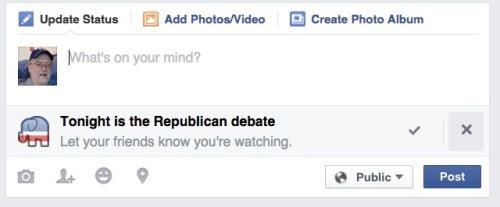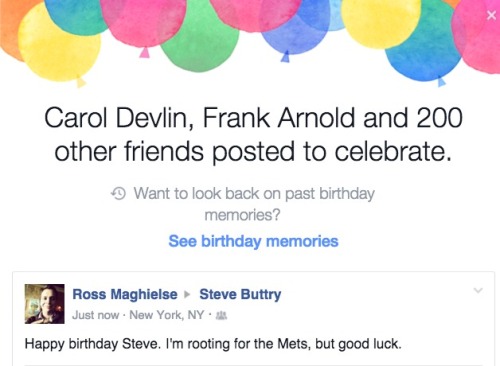
Graphic from State of the Media 2015, Pew Research Center
I try not to say “I told you so” here (in fact, I just checked and the phrase never appeared on this blog until now).
But, as I read the State of the Media 2015 report by the Pew Research Center, I am struck by the growth in mobile advertising, from $416 million (with an m) in 2009 to $19 billion (with a b) in 2014. In five years, that’s an increase of 4,500 percent, and mobile advertising has surpassed print newspaper advertising, which is just under $17 billion.
I told you so. Back in 2009, when smartphones were still new, tablets were not even new yet and no one dominated mobile advertising, I called for news organizations to pursue a mobile-first strategy. We had a chance then. Digital giants like Google and Facebook were fumbling around in mobile. We could have and should have been the mobile leaders in our communities and in digital media.
I advocated making mobile the top priority at the company where I worked in 2009 and subsequent companies, and publicly on the blog and at media conferences. Maybe I provided a nudge here or there to increase mobile awareness, but I can’t think of a single legacy media company that became anything close to mobile-first.
Pew’s 2010 State of the Media report (covering 2009 developments), not only didn’t have any sections dealing with mobile, the word didn’t appear in the overview, major trends or online summary essay. The only reference to “mobile” in the key findings section was to distinguish Internet radio from using radio in your car.
In this year’s report, the lead is: “Call it a mobile majority.” The report focuses heavily on mobile media and notes that 39 of the 50 leading digital news sites get most of their traffic from mobile devices. And the report tells who’s dominating mobile advertising: Facebook, Google, Twitter, Pandora and Apple combine for 64 percent of mobile display advertising. Not a news organization in the group.
By the way, Google’s CEO at the time, Eric Schmidt, proclaimed a “mobile-first” strategy in February 2010, less than three months after I urged news organizations to take that direction. Guess who moved faster and smarter down the mobile path.
My point here is not to boast, though I will do that later. I think the opportunity was obvious back then and I wasn’t particularly insightful to notice it. My point is to help colleagues in the news business learn from a huge mistake and pursue similar opportunities if they exist now.
Opportunities in 2015
So what are similar opportunities now? I don’t see anything with growth potential as huge and obvious as mobile and social media were six years ago. Someone smarter than me might see opportunities I don’t list here, but these are areas with potential to grow in use, with possibilities for news and revenue:
Wearables. The Apple Watch has made a splash but doesn’t seem to be the must-have multi-use product that the iPhone became when it debuted. Google Glass didn’t take off, but I suspect some glasses-like product will return. Fitness devices are popular, but it would take a big change in their use to provide a significant opportunity for news and advertising revenue. I think these products and other wearables that may follow together present an opportunity for news organizations. But you need to move quickly and creatively or the tech companies will dominate here, too.
Location. I still think location-based news, advertising and commerce remain an area with great potential that no one has mastered yet. (I had hopes for Foursquare, but it never took off the way I thought it could.)
Transactions. This was a huge failure of the thinking of news organizations, which thought narrowly about advertising and subscriptions as the ways you made money. News media companies would be healthy now if we had developed effective local digital marketplaces that sold products and gift certificates, made reservations and otherwise make local cash registers ring (beep, actually, but some clichés don’t update). I think local transaction-focused advertising and local search (which should go together) still hold potential, though giants such as Google and Amazon have snapped up some of the opportunities I used to see there.
Social media. News organizations have mostly done a miserable job using Facebook, Twitter, YouTube, Pinterest and Instagram to engage their communities, expand their audience and generate revenue. They can certainly benefit from improving their performance with those established social tools. But if social media presents a huge opportunity today, it’s probably in some newer tool such as Snapchat, Yik Yak, Periscope, Meerkat or something yet to come out (with a limit of one post per day, I don’t see a great opportunity for news organizations in This.).
Video and podcasts. We still have not developed all the video possibilities for content and revenue. And, as the Pew report noted, podcasts are making a comeback.
Live coverage. Few news organizations have embraced live coverage routinely, as I have advocated, and fewer still have made serious, creative efforts to develop the commercial possibilities of live coverage (including entirely commercial live content).
Memberships. I have always thought membership was a better way to get community revenue than paywalls. We’re seeing some small membership efforts, but I think we can do more.
Events. News organizations are working on developing events as a supporting revenue stream. I doubt they can become the primary source for many news operations, and the bigger they get, the more they present potential conflicts between promotion and news coverage. But they need mention here as a revenue source that can and should grow.
Native advertising or content marketing. I put this last not because it has the least potential, but because news organizations are working harder on this than some of the others. I don’t think we’ve developed all the possibilities here, though, and I suspect that potential advertisers don’t really need news media to get these messages out. Public-relations and advertising companies and corporate communication departments are working on reaching potential customers directly with their messages, and I suspect they will succeed more and faster here than news organizations will.
What other areas have potential that news organizations should explore? I’m sure I am missing some.
Just as mobile received scant attention in the 2010 Pew report, don’t look for a lot on these topics in the 2015 report. Only podcasting gets its own section. Pew reports annually on how the media are (newspapers continuing to decline, mixed results for TV, yada, yada), and the media aren’t pursuing any of these opportunities aggressively enough.
My mobile vision in 2009-10
Six years ago this week, when I published my Blueprint for the Complete Community Connection, a vision for a different kind of media company, I cited the important of the mobile opportunity in my introduction:
We need to look at mobile opportunities and email opportunities as well as print and web. And we should watch for new opportunities as new technology presents new ways to connect. We should explore every possibility for providing people the news and information they want when they want it, whether that means email, text message, RSS feed, Twitter feed, social media, iPod, game device, GPS device or some other way of interaction.
In retrospect, my original C3 plan should have had a stronger mobile emphasis, though mobile opportunities were clear in parts of it, such as my suggestion about driving. The urgency and potential of the mobile opportunity became more clear to me later in 2009.
On Aug. 31, 2009, I called on newspapers to help local businesses pursue mobile opportunities. I said we should take the lead in developing mobile coupons and other forms of mobile commerce:
We need to devise ways to help local businesses sell their products and services to people on the move. We need to teach local businesses how to connect with people who are always connected. We need to develop mobile formats for news content, community information, databases, calendars, advertising and other services for users and for businesses. …
We spend too much time reliving the mistakes we’ve made in the past. Let’s not make mobile one of them.
By Nov. 20, 2009, my “mobile-first strategy” had taken clear shape:
News organizations are belatedly, reluctantly and often awkwardly pursuing “web-first” strategies. As we fight these web battles, I am increasingly coming to believe that “web first” is what the military would call fighting the last war. News organizations need a mobile-first strategy. …
We can’t waste that much time in mastering the mobile market. We need to start thinking mobile first. Now. The world is moving swiftly to smart phones and we can’t afford to be as far behind this time (in truth, it’s too late to be ahead, but not too late to pursue opportunities that can lead us to a prosperous future). We need to make mobile innovation the top priority and the first thing we think of when we plan change in our organizations.
(I should note that web-first meant content would be published online before in the print edition, and that the organization should start thinking first about the web, though most didn’t, regardless of what they were saying. When I say we must shift to a mobile-first strategy, I’m not talking about where content appears when, but about the priorities of the organization: what you place first in your thinking and acting.) …
If we wait until nearly everyone has some sort of smart phone, someone else will be filling the roles that we can and should fill. …
Whatever your role in your media organization, consider how you would change your work, your priorities and your thinking to support a mobile-first strategy. This will either be our future or our next squandered opportunity.
My next mobile-first post elaborated on how news organizations should change their work and structure. Here’s part of what I said about technology, sales and marketing:
Technology
… Don’t think of apps just as devices for delivery of your content. Apps should become a revenue source, too. Just as newspaper and television companies help business customers produce advertisements for their products, a mobile-first organization is going to help business customers develop mobile apps to promote their businesses and sell their products and services. Many of the aspects of the mobile-first approach will require shifting resources from current print, broadcast or web operations to mobile operations. But development and deployment of commercial applications will produce revenue to support eventual expansion of mobile operations.
Development of commercial applications will need to stress applications whose content can be updated easily by merchants. For instance, if a local pizza parlor has an application for ordering pizzas for pickup or delivery, the operator should be able to update prices or add new ingredients or menu items easily from an office computer, so that applications will update automatically when a user next opens the pizza application.
Sales
Sales staffs need to listen to consumers and businesses and learn how to help businesses serve the mobile audience. In the early stages of a mobile-first organization, sales efforts will be focused heavily on educating and training business customers on mobile opportunities and our organization’s role in connecting businesses in our community with mobile customers.
Traditional advertising was intrusive and often unwelcome. You open your newspaper to continue reading a page-one story and photos of women in bras attempted to catch your eye about the lingerie sale at the local department store. Or you tune in the evening newscast and ads for local car dealers shout at you between the news reports. We still need to sell those ads because they deliver value for businesses in traditional ways and because they are the revenue streams that keep us operating today. But mobile revenue will keep us operating tomorrow and, as I have blogged before, we need to learn how to help businesses pursue mobile opportunities.
Mobile commercial content will be convenient and responsive, rather than intrusive. Search advertising provides the answer that the potential customer was seeking. Location-based advertising should not be intrusive or people will devise ways to turn it off. Our community apps and sites need to provide location-based tabs such as “shop nearby,” “dine nearby” or “nearby entertainment.” The user can ignore those tabs if she knows where she wants to go and just wants information on parking, for instance. But a user who clicks on such a tab welcomes our help (and the help of businesses paying us for access to these customers).
As described in the C3 revenue approach, we need to be sure we don’t fall into the trap of focusing just on advertising. Some of the best mobile opportunities will go much deeper than simply delivering business messages to an audience. We may make the sale, using a customer’s credit card (or possibly an account with us that taps into a credit card, checking account or prepaid balance). We may make a reservation or enroll a user in a class or a business’s preferred customers club. We may send the business an inquiry from the customer.
We also need to be careful not to use just a single mobile tool, such as a mobile web site or iPhone application. Some businesses may want to sponsor breaking news alerts, reaching the text-message audience with a link to the company’s web site or to its enhanced listing in our business directory. Some may want to sponsor a podcast or an email newsletter, reaching people wherever they access email.
Sales staff will need training in how mobile opportunities can work and how to teach a local business to pursue those opportunities. While we need to be willing to invest heavy sales staff time in landing accounts and in training businesses to use their apps, we also need to design self-serve mobile accounts that the business customer can change and update after we get them launched, as described in the pizza example in the technology section.
We need to develop pricing that helps businesses use our mobile services. We can’t discount services that we know will be valuable. We need an affordable base rate, with most of our pay based on performance as we deliver for our business customers. For instance, in the pizza example, we need to charge a reasonable fee for development of the app. But most of our revenue will come from pizza orders (of course the app needs to record orders accurately for both us and the business customer). We may collect the revenue ourselves from customers’ debit and credit cards, taking our cut before we pass most of it along to the pizza parlor. Or the merchant may collect the money (in this example, we might want to leave an option of paying cash) and we invoice for our fee. Or we may use a third party such as PayPal to handle the transaction.
More and more, we need to sell customers into a full range of services. We sell them an enhanced listing in the business directory, so we can connect them with customers searching for the services they offer. We help them determine the best way to use our services to move the customer toward the transaction or to actually make the sale. We sell them location-based premium listings. We develop an app for them and help them deliver the app to the phones (or other devices) of the right customers. Yes, web, print and broadcast advertising will be part of the package for some customers, too, but we can’t just call on our usual suspects. Location-based advertising will appeal to some merchants who haven’t been interested in reaching the full community through a newspaper or TV ad, but absolutely want to reach the person who’s nearby at lunch time.
Marketing
News companies know how to market newspapers and newscasts. We shouldn’t stop marketing those products and our web sites, but the mobile-first organization will have a mobile-first marketing department. The community knows about the legacy products and will continue to find them with a reduced marketing effort.
We will need an aggressive (and vastly different) marketing effort to tell the community about all the ways we serve your mobile audience. The effective marketing strategy needs at least a two-pronged approach: sophisticated and witty to alert the savvy mobile customer to our services and simple and educational to teach the new or confused mobile customer how many jobs we can help her with. …
We need to work aggressively in sales channels to get our apps onto people’s phones. Obviously we need to use iPhone’s App Store. We also need to connect with local retailers selling phones and other mobile devices, perhaps offering free apps that introduce and promote our apps or offering to load our package of apps on each phone sold (perhaps as part of a deal that includes advertising for the retailer). We can offer classes in the community on how to use our location-based services and our applications. …
I continued on the theme in 2010:
- I suggested an idea for a mobile project news organizations could undertake to engage their communities effectively on mobile devices with news and revenue opportunities. I had proposed the project for Gazette Communications and the 2010 Orange Bowl, where Hawkeye fans would be in Miami in large numbers, out of reach of our newspaper and TV station, but carrying their phones. The company didn’t give it a try. I outlined the idea publicly and on the blog for the 2010 American Society of News Editors conference, but I’m not aware of anyone who tried it. I followed up the post outlining the project idea with a Q&A from questions the editors asked.
- I used Gordon Borrell’s projections for growth of mobile revenue (they were actually conservative) to show how huge the opportunity was.
More recently, I stressed the importance of mobile in my advice for new Digital First Media editors and in Project Unbolt and in the INMA’s Culture Change blog. But culture changes slowly, and I can’t point to a legacy media organization that has excelled in mobile the way that it should.
I wish I saw an opportunity today as huge as mobile was in 2009 and 2010. Without a doubt, Google, Facebook, Apple and the other digital giants were going to seize huge chunks of that $19 billion. But news organizations had a chance to beat them into the mobile space and grab a big part of a revenue stream that has surpassed newspaper advertising.
We acted too timidly in our pursuit of mobile, and we spent energy on defensive measures such as paywalls. I’m not saying the opportunity has passed. But catching up usually isn’t as lucrative as leading the way.
Read Full Post »
 But that was early in the history of the web and well before Google, so I also developed an amateurish flier promoting my services (design was never a strong suit of mine). I mailed that flier to newsrooms and press associations around the Midwest and landed three training gigs: with the York News-Times (a Nebraska daily not to be confused with the New York Times), the North Dakota Newspaper Association and the Minot Daily News. Since I was a former Minot editor and well known to the folks at NDNA, those gigs came through a mix of networking and promotion. But I didn’t know anyone at York, and that first training gig came from the amateurish flier. (more…)
But that was early in the history of the web and well before Google, so I also developed an amateurish flier promoting my services (design was never a strong suit of mine). I mailed that flier to newsrooms and press associations around the Midwest and landed three training gigs: with the York News-Times (a Nebraska daily not to be confused with the New York Times), the North Dakota Newspaper Association and the Minot Daily News. Since I was a former Minot editor and well known to the folks at NDNA, those gigs came through a mix of networking and promotion. But I didn’t know anyone at York, and that first training gig came from the amateurish flier. (more…)






















